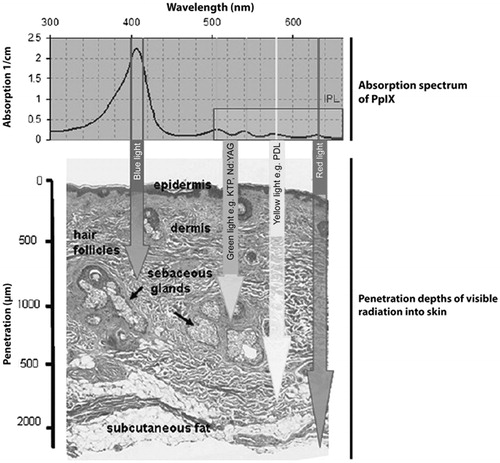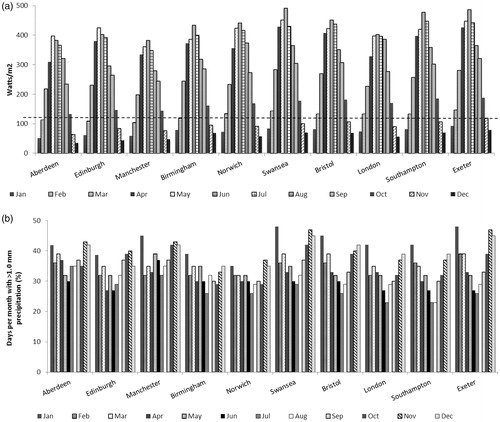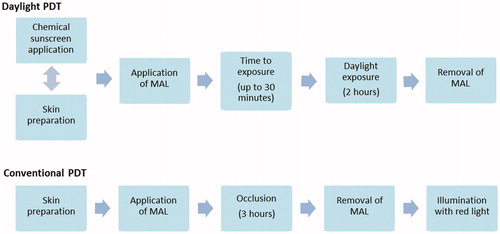Figures & data
Figure 1. Wavelength-dependent penetration of blue, green, yellow and red light in PDT. Arrows indicate the approximate 50% optical penetration depth in human skin. Reproduced with permission (Citation34).

Figure 2. Meteorological data for the UK, showing the daily average light irradiances throughout the year between 09:00 and 18:00 (Panel a) and the days with >1.0 mm precipitation (Panel b; personal communication). The threshold above which efficacy appears to be independent of light irradiance (130 W/m2) (Citation24) is indicated by the dashed line.

Table 1. Information on average UK weather conditions 1986–2005 (personal communication).
Table 2. d-PDT Protocol considerations.
Figure 3. European consensus protocol for daylight photodynamic therapy (d-PDT) compared with protocol for conventional PDT (c-PDT). Adapted from (Citation11,Citation36).

Table 3. Patient understanding for treatment with d-PDT.
Table 4. Summary of recommendations.
